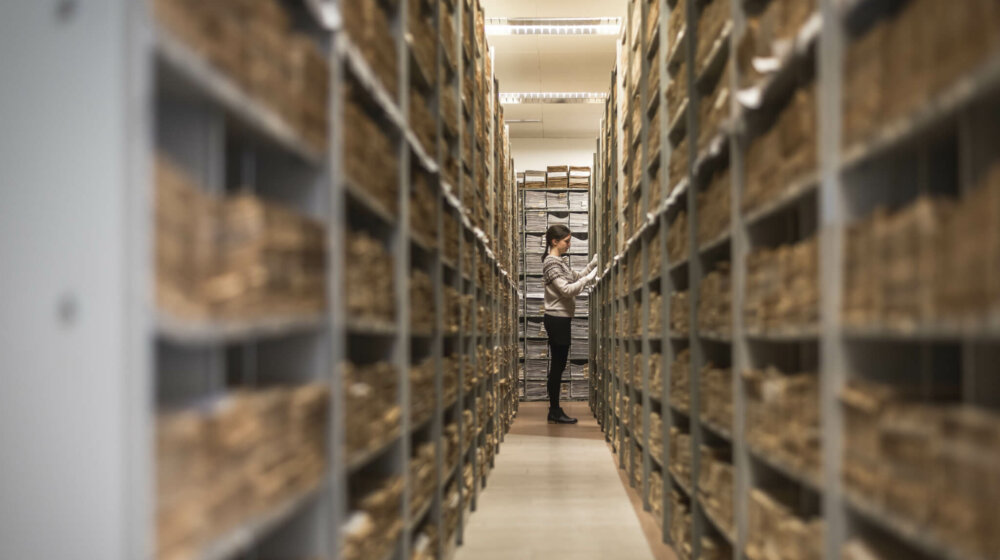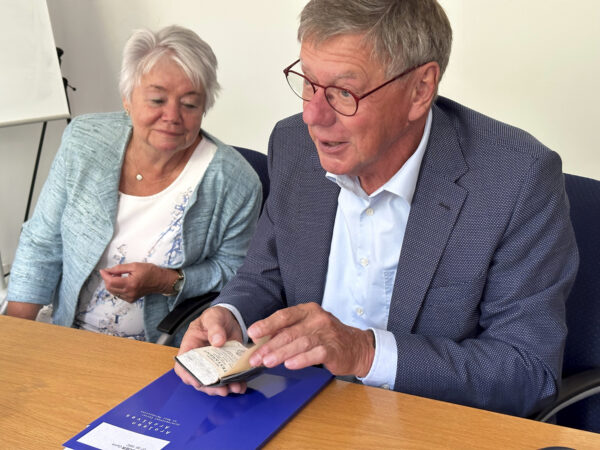Rise in Inquiries Relating to Nazi Persecution in 2023

In the first half of 2023, the Arolsen Archives have already received over 10,000 inquiries relating to Nazi victims and survivors. Compared to the first semester of last year, this is an increase of more than 20 percent. More inquiries than in previous years came from Israel and Poland in particular. Numbers of people visiting the website and using the online archive are also significantly higher.
“During the pandemic and when the war against Ukraine started, numbers of inquiries reaching us saw a slight decrease,” explains Alexander Lommel, head of the tracing department. “Fewer inquiries continue to be received from Ukraine, Russia and Belarus. In compensation, interest in many European countries and in Israel has notably increased now.”
As regards Europe, more people from Poland, France, Italy and the Netherlands have turned to the Arolsen Archives inquiring about persecution since the beginning of this year. By late June 2023, more than 1,500 inquiries had come from Poland alone – that is almost 50 percent more than in the first half of 2022. The increase in inquiries from Israel, too, is almost 50 percent.

Since 2022, the #StolenMemory traveling exhibition has been touring Poland, commemorating the fates of Polish Nazi victims and survivors: Can this be a reason for the higher number of inquiries from the country?
More Inquiries from Researchers
Now as before, most people search for information about relatives who were murdered, persecuted, or deported by the Nazi regime. Since the beginning of 2023, the number of historians having research conducted at the Arolsen Archives has also increased. They are less interested in individual fates of Nazi victims, but rather in groups of victims or document collections on specific topics of Nazi persecution. The more specific character of these inquiries requires more time and effort for their processing.
» Due to the increasing number of inquiries, the waiting period is getting longer. For this reason, all interested are recommended to make additional use of the online archive including around 40 million searchable documents. «
Giora Zwilling, Head of Digital Transformation and Archives
More Users of the Online Archive
In online archive, users can look through the collections of the Arolsen Archives comfortably from home and search for the names of Nazi victims. It includes millions of individual records on individual prisoners from concentration camps, ghettos, prisons, and other Nazi detention centers, lists of deportations, and vast collections on forced labor and displaced persons.
Numbers of people using the online archive and the digital offerings of the Arolsen Archives have risen steadily in recent years, all the more so during the pandemic. The year 2023 has seen another strong growth: In its first half, 340,000 people have already searched the online archive – over 30 percent more than in the previous year!
Visits on Site: Now Possible Again!
After the pandemic years, this year saw a significant increase in the number of people coming to Bad Arolsen to conduct on-site research or to receive personal items owned by formerly persecuted relatives. Since the beginning of the year, more than twice as many relatives and private persons visited the Arolsen Archives as did so in the previous year. What is really impressing is the increase in the number of researchers received: While 36 interested people only came to Bad Arolsen in the first half of 2022, more than 220 have already visited the Archives already in 2023!

In July 2023, Georg Hoojier and his wife Conny picked up his grandfather’s bible in Bad Arolsen. The Dutch resistance fighter Gerrit Hoojier was imprisoned in the transit “Kamp Amersfoort” for several months in 1944/45.

